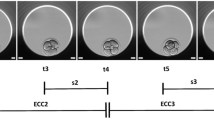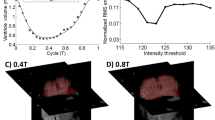Abstract
WE have observed a consistent alteration in the size of the heart of chick embryos following the exposure of 11- or 12-day-old embryos to increased or reduced temperatures of incubation for one week. In one series, ninety 11-day-old embryos, which had been maintained at the normal temperature of 37.5° C, were removed from their incubator, candled, and divided into three groups of 30 each. One group was placed in an incubator at 32.5° C, the second returned to 37.5° C, and the third placed at 42.5° C. On the eighteenth day of incubation live embryos were found as follows: 26 at 32.5° C, 29 at 37.5° C and 18 at 42.5° C. All the embryos at 42.5° C and 20 of the embryos from each of the other two groups were examined. The embryo was removed from its extra-embryonic attachments and weighed. The heart was removed with the great vessels cut close to the heart, and the organ weighed. The weights of each embryo and its heart are seen tabulated in Fig. 1.
This is a preview of subscription content, access via your institution
Access options
Subscribe to this journal
Receive 51 print issues and online access
$199.00 per year
only $3.90 per issue
Buy this article
- Purchase on Springer Link
- Instant access to full article PDF
Prices may be subject to local taxes which are calculated during checkout
Similar content being viewed by others
Author information
Authors and Affiliations
Rights and permissions
About this article
Cite this article
LEIGHTON, J., MERKOW, L. & LOCKER, M. Alteration in Size of the Heart of Late Chick Embryos after Incubation at Varied Temperatures. Nature 201, 198–199 (1964). https://doi.org/10.1038/201198b0
Issue Date:
DOI: https://doi.org/10.1038/201198b0
This article is cited by
-
Das Herzgewicht —ein hoch erbliches Merkmal beim Schwein
Archiv für Kreislaufforschung (1971)
Comments
By submitting a comment you agree to abide by our Terms and Community Guidelines. If you find something abusive or that does not comply with our terms or guidelines please flag it as inappropriate.



